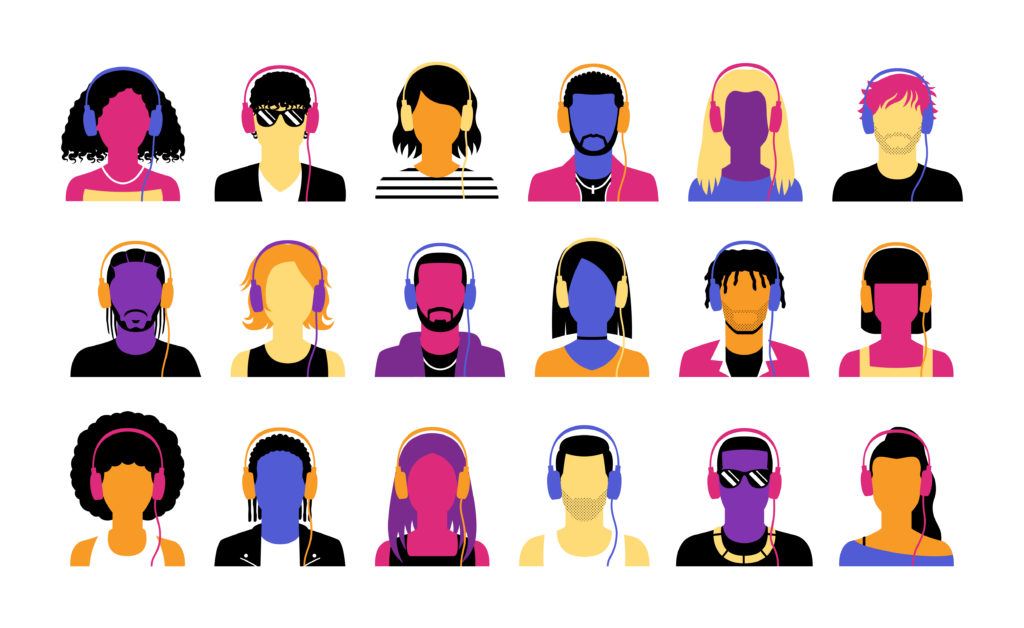
Back in June, I wrote what turned out to be Part 1 of this post.
“How Many Hats Are You Wearing?” took on the issue of productivity that might be veering a little out of control.
In the post, Neal deGrasse Tyson gave us these words on which to marinate:
“To be more creative, you have to be less productive.”
And so the question was raised about how many “hats” the average radio air personality is wearing in 2021 – and have there been additional job duties piled on since the beginnings of COVID?
At the time, we just had our experience and observations on which to speculate. But I promised that in AQ3 – our survey of air talent on commercial radio – we would ask the question about how many different jobs the average personality is now being asked to work.
Well, the results are in. Just over 600 radio hosts responded to our survey. And while I’ll be giving attendees at Morning Show Boot Camp in Chicago next week a fuller picture of the top-line results, I wanted to share this one with you now.
We counted different jobs – or “hats” – as follows:
- Being the PD and being on the air = 2 hats
- Doing an air shift on two stations in the building/company = 2 hats
- Being on the air and the production director = 2 hats
You get the idea. And here’s how the results broke out for those on the air (excluding producers, etc.):

The average air personality on a commercial radio station in the U.S. wears nearly three hats. Not too many years ago, it was common to hear managers and owners complaining how many hosts were believers in the “four and out the door philosophy” – that is, doing a four-hour air shift and then heading for the exits.
It sure looks like that problem has been resolved…and then some.
Of course, three hats is average. When you dig a little deeper, you see nearly one in four are now holding down two jobs, nearly three in ten are wearing three chapeaus, while another nearly three in ten are juggling four – or more – hats at the same time.
This is the world we live in.
And to learn more, we looked at these same people and cross-tabbed them by the size of the company they work for. And wouldn’t you know it – the smaller the company, the more hats personalities are asked to wear:
 On the smallest end – the mom & pop’s – the average host is responsible for well more than three jobs. In fact, a plurality – 37% – are holding down four or more gigs or roles in the building.
On the smallest end – the mom & pop’s – the average host is responsible for well more than three jobs. In fact, a plurality – 37% – are holding down four or more gigs or roles in the building.
But even looking at what we called “the big companies,” nearly half (49%) are wearing three or more hats. So, the phenomenon is industry-wide.
That’s a lot of job responsibility. When you add in having to do the extras – production, social media, appearances, etc. – it perhaps explains why personalities struggle to turn in great shows on a consistent basis. Add in the stress of COVID, and you’ve got the perfect storm of feeling overworked and highly stressed.
You might be thinking – is this any different than it used to be?
And so we followed up our question that quantified the number of “hats’ with one that asked whether the current work load is heavier, lighter, or about the same as since the pandemic.
It turns out 38% say they’re now wearing more hats since COVID, versus only 6% who say they have fewer responsibilities. That’s a 6x difference, and it’s another great example where data can tell a powerful story.
 So, what might we conclude from this section of AQ3?
So, what might we conclude from this section of AQ3?
First, most air talent aren’t sitting around. For most, there’s always work to be done, and perhaps many feel they’re just not able to get it all done.
Second, many are displaying versatility by tackling more jobs, often hosting multiple formats.
The final observation relates to the quality and creativity of their air work. And it’s subjective.
As you’ll see in the data, there are many people behind the mic who are stressed to the max, often feeling overworked and yes, underpaid.
But there are also many personalities who believe they are at the top of their game, doing some of the best work of their careers.
Can both of these be true at the same time?
Our cursory view of the data indicates a division between those who make their living behind the mic. Some are very well-paid, financially set, firing on all cylinders, and happy to be doing what they’re doing.
But there are many others in a darker place. They struggle to make ends meet, feel beaten down, unappreciated, and overwhelmed.
And many point the finger at their companies of employ letting them down. We’ll see more, discuss the findings at Boot Camp, and hopefully have a larger conversation when these AQ survey results are presented in a free webinar next month.
 But this I know. Ownership’s relationship with its most precious asset – its personalities – is at an inflection point. And thanks to COVID, feelings of anxiety, dejectedness, and even depression are palpable and becoming more common again with each passing day.
But this I know. Ownership’s relationship with its most precious asset – its personalities – is at an inflection point. And thanks to COVID, feelings of anxiety, dejectedness, and even depression are palpable and becoming more common again with each passing day.
As we’ve seen at the Olympics, mental health will be an even more common topic over the next many months – and beyond.
Companies, managers, and programmers would be wise to spend the time with their performing staff, listening, and practicing a little empathy.
The last 18 months have taken their toll on some of radio’s best – the same stars who have built brands, made connections, and engaged with listeners, advertisers, and local communities.
I hope to see you next week at Boot Camp. We’ll talk about it.
For more information about Morning Show Boot Camp, click here.
- What To Do If Your Radio Station Goes Through A Midlife Crisis - April 25, 2025
- A 2020 Lesson?It Could All Be Gone In A Flash - April 24, 2025
- How AI Can Give Radio Personalities More…PERSONALITY - April 23, 2025




This was going on WELL before COVID. Can attest to that at least at Saga Communications.
Pretty much everywhere. Radio broadcasters were under intense pressure in 2019 (and before).
Long ago, Ed Koch, the newly elected mayor of New York could be seen on the streets asking strangers, “…how am I doing?”
i recently saw a ranker (Adults 25-54 M-F 6A-7P) for Austin and was shocked to find that the #1 station has a .7 rating. #5 has a .3. It wasn’t that long ago when buyers used to buy 12 spots with some night time freebies on 3 or 4 stations to complete a 100 GRP/week buy. If you dig more deeply into the numbers, you find that while radio’s overall monthly cume hasn’t dropped, individual station weekly cumes have…like a rock.
How’s radio doing? By Ed Koch’s metric, not too well. To be fair, there is a lot more to ratings than on air personalities, but its also fair to conclude that a good portion of the decline can be traced to the number of people that have been replaced with hats. So radio has personalities that are working harder and more with progressively less to show for it, which has to be really hard on those people psychologically. That can’t be helping and the sum total surely is impacting the quality of the product, which based on the ratings, people are noticing.
Is this where the term asshat started?
Lots to think about here, Bob. Clearly, there’s a lot of competition out there that didn’t exist 20 years ago. You can read it lots of different ways – has radio been sliced and diced by all that competition OR has it actually hung in there well, given the myriad audio options?
As I said in the post, on-air personalities are often so bogged down with “extra hats,” it has become more difficult for them to be creative.
The “asshat” question? Maybe so.
I think its safe to say a lot of things have taken their bite out of radio’s apple, but also safe to say that radio has done everything it could to maximize the damage by cutting back or eliminating most of what its own research made clear people valued most about it. I can’t think of any other sector that responded to unprecedented competition with unprecedented cost cuts. And radio could have taken and owned big pieces of the media that took big pieces of its audience.
Some was inevitable, over half probably self inflicted IMO.
Budget cuts have played a role. It’s hard to compete in this arena with depleted resources. But I’d add in an utter lack of R&D into the mix as well. Radio operators have continued testing music, and conducting perceptual studies among radio listeners, but have not surveyed the new landscape – to its detriment.
Leave it to an old guy sitting next to the stove, but “back in my day” I did an airshift, read the news, did production (on the “audition” channel), change the needles in the turntable, align the tape deck heads, change tubes in the console..and on several occasions even take spare parts up to the transmitter. My attitude toward that never changed. Whatever needed to be done had to be done. In 2021 a good leader can share her (or his) vision with the staff and enlist the help of people who “get it” – to help get it done. It’s not always possible to get the entire staff on the same page and there will be casualties. But a great organization will entrust the leaders to find a way to do it right. Trouble is there doesn’t seem to be a lot of “great” organizations. Staffers are given the hats without understanding the purpose and then ripped apart when they don’t “get it”. I’ve yet to see a great organizational chart in 2021 that specifically spells out who does what in a station cluster, and too often the assignments come from way up top. We all know people who live, eat, breathe clocks, promos, liners, promotions 24/7 – and even in the consolidated world of 2021 many of them are relegated to following the unexplained directives of their “leaders”. It’s really a simple case of whatever it takes to get the job done.
I appreciate–and relate–to these comments, Dave. As an “old guy” myself, I thought nothing of some of the “extras” that might occasionally come with the job. More than once I was in the field at a tuning cabinet with an engineer on the phone directing me what to do. And I was glad to do it. Logged on and taking hours for the extra work? Never once crossed my mind. The key word, though, is “occasionally.” It’s one thing to have an extra hat or two tossed on from time to time. It’s another to expect someone to wear multiple hats all the time, as sadly has become the norm. Even hats can crush you if you wear too many too long.
We’re tracking, Mr. Manzi.